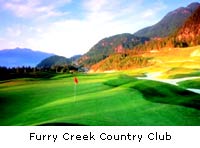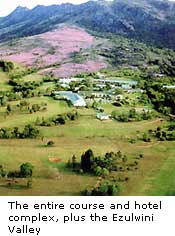By Michael Vlismas, Staff Writer
 Ezulwini Valley, Swaziland (July 29, 2002)--Earlier this year, the Transport Minister of Swaziland admitted during a parliamentary sitting that one of the navy's ships was missing. Ezulwini Valley, Swaziland (July 29, 2002)--Earlier this year, the Transport Minister of Swaziland admitted during a parliamentary sitting that one of the navy's ships was missing.
"The situation is absolutely under control," said Minister Ephraem Magagula. "Our nation's navy is perfectly safe. We just don't know where it is. We believe it is in a sea somewhere. We sent a team of men to look for it, but there was a problem with drink and they failed to find it, and so, technically, yes, we've lost it a bit. But I categorically reject all suggestions of incompetence on the part of this government. The ship is a big ship painted in the sort of nice bright colours you can see at night. Mark my words, it will turn up."
And then, in response to a taunt from another minister, he added, "The right honourable gentleman opposite is a very naughty man, and he will laugh on the other side of his face when my ship comes in."
The casual nature of Swaziland's navy veils an even greater nonchalance that can be felt throughout the country the minute you cross the border from South Africa into this tiny, landlocked, mountain kingdom.
There are four things for which Swaziland is well known, namely the famous Swazi candles, the glass factory, the often absurd antics of King Mswati III, and the Royal Swazi Sun.
The latter is of most interest to golfers. The luxurious resort, which forms part of the Sun International stable of hotels, is located just outside the capital of Mbabane in the aptly-named Ezulwini Valley, translated Valley of Heaven, and is home to the Royal Swazi Sun Golf Club, a sweeping par-72 layout that ranks as one of the best in Africa.
At first glance, the course appears to be fairly innocuous, winding its way through undulating hills and lush sub-tropical foliage. At 6,172 metres, it ranks as relatively short by professional standards. All of the par-fives are within range of medium-length hitters and many of the par-fours are a simple drive and wedge. But it is a tight and tricky layout that has, over the years, continued to get better with age.
The course opened in 1966, and has been laid out on the slopes of the Lebombo Mountain Range, which slopes into the Ezulwini Valley. The first nine holes are flat, while the second, more appealing nine, takes you on a trip through hills and dales, including the famous walk up "Thrombosis Hill" from the 10th green to the 11th tee, and offers the best views of the valley. The layout makes effective use of the sloping terrain to either steer the wayward hitter's ball off into the rough or guide the well hit tee shot safely down the fairway. The bigger hitters will relish the par five 12th, where a solid drive can catch the slope and leave your ball only a wedge away from the green.
 The course is a pleasant mix of risk and reward, culminating in the 18th, a cheeky par three with a ravine guarding the green on which tournaments have often been won or lost. The course is a pleasant mix of risk and reward, culminating in the 18th, a cheeky par three with a ravine guarding the green on which tournaments have often been won or lost.
The greens are some of the best to be found in Africa, conforming to USGA specifications and providing a slick putting surface. The ninth is the largest green on the course, and it was here where 1998 Swaziland Open champion Paul Friedlander had to endure a local photographer with very little knowledge of the game of golf standing literally three feet from him on the green as he attempted a birdie putt.
The golf course is one of the longest serving courses on Southern Africa's Sunshine Tour, playing host to the Swaziland Open from as far back as 1971. Americans such as John Buczek, Rick Hartmann, Don Levin, John Daly, Hugh Royer, Omar Uresti and Bradd Ott have all played and won on this undulating layout, as well as names such as Ernie Els and Mark McNulty.
Swaziland's laid back atmosphere has always been a big drawcard for professionals over the years, with the Swaziland Open usually including a friendly game of lawn bowls between some of the pros on the eve of the first round.
The clubhouse overlooks a vast putting green, and is filled with memorabilia of golf in Swaziland over the years. There is also a full size snooker table.
 But the beauty is that after 18 holes of golf, a few pints in the pub and possibly a snooker game, golfers simply have to walk about 50 metres to their rooms in the lavish Royal Swazi Sun Hotel. But the beauty is that after 18 holes of golf, a few pints in the pub and possibly a snooker game, golfers simply have to walk about 50 metres to their rooms in the lavish Royal Swazi Sun Hotel.
This is by far the flagship hotel in Swaziland, with the Lugogo Sun and Ezulwini Sun two other popular destinations all on the same property.
The Royal Swazi Sun was granted its prefix by King Sobhuza II, and it remains the first choice of accommodation for the royal family.
The architecture has a grand colonial style about it, mixed with ethnic colours. There are 128 double rooms, 14 family suites and 11 luxury suites all equipped with modern amenities, including a 24-hour in-room dining service.
Perhaps the most enjoyable is a "Do not disturb" button on your bedside table which activates a light in the corridor should you require some peace and quiet. It's little touches like this, as well as the deep colours and regal African designs, which make you feel as though you've been paid a hefty appearance fee to treat these fairways to your majestic swing.
The hotel frames a large pool and Jacuzzi overlooked by an open bar. And inside lies the casino, children's game room and the tasteful Terrace Restaurant and Planter's Bar and Restaurant.
Apart from golf, you can enjoy activities such as horse riding, squash, tennis or even volleyball.
And there's nothing like a relaxing massage to soothe those aches brought on by a young mind in an old body.
The Spa is, apart from the golf course, the premier attraction of the Royal Swazi Sun and conforms to the highest international standards. Anything from a hydro-massage to a sauna, a full body or sports massage, or even a seaweed wrap for the more adventurous, is on offer.
But the beauty of this country extends beyond the borders of the Royal Swazi Sun, with most of the tourist attractions just a short drive from here.
The roads in Swaziland are not the best, but nobody is really in a hurry anyway. And the myriad of craft markets and roadside stalls selling every African curio imaginable at incredibly cheap rates will make any journey worthwhile. You can even request a lunch pack to be made up by the hotel for your trip.
The most popular attractions include a trip to the Swazi candle factory in the Malkerns Valley. The candles are hand-made and come in various designs, including multi-coloured cows.
The Ngwenya Glass factory near the Oshoek Border Post uses recycled glass blown into artworks or elegant wine glasses.
Swaziland is also home to a number of game reserves, the major ones being the Hlane Royal National Park, home to the country's largest herds of game; the Mhkaya Game Reserve for endangered species; and the Milwane Wildlife Sanctuary, where rangers feed the hippos in the lake each evening.
For the more adventurous, there are guided walking safaris, mountain-biking and white-water rafting trips which can be arranged by Swazi Trails, all of which can be booked at the Royal Swazi Sun.
You have two choices in getting to Swaziland. You can either take a four-hour drive from Johannesburg, with your best bet to enter the country through the Oshoek Border Post from the Mpumalanga Province of South Africa.
Keep in mind that this is a typical African border post, meaning it is always crammed full of people and could take some time to cross. From the border, the capital city of Mbabane is a 30-minute drive. But again, this is a 30-minute African drive behind taxis, trucks and bicycles. Follow the road to the Ezulwini Valley, and then follow the signs to the Royal Swazi Sun.
Or you could take a 45-minute flight from Johannesburg International on either Royal Swazi Airways or British Airways to Swazliand's Matsapha International Airport. The airport is only a 20-minute drive from the Royal Swazi Sun, and the hotel does offer a shuttle service.
All visitors to Swaziland require a valid passport, while residents of certain countrys will also need a visa. If you are travelling to Swaziland from South Africa, you need not change your rands into the local emalangeni currency, as both are accepted on an exchange rate of one to one in Swaziland.
Oh, and if you happen to spot a naval war ship on your travels, please give Minister Magagula a call.
Contact Information: Sun International Head Office - +27 11 780 7864
Samantha Dockerty, Assistant Public Relations Manager of Resorts, Sun International Head Office - Tel: +27 11 780 7636
Royal Swazi Sun - 09268 416 1001.
E-mail: Swazisun@Realnet.co.sz
Alternate accommodation: Lugogo Sun 09268 416 4000 or Ezulwini Sun 09268 4161201 |
